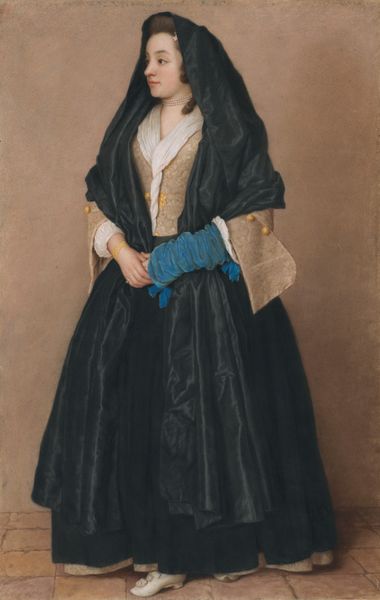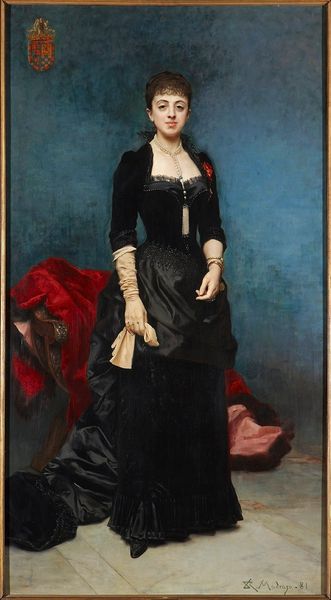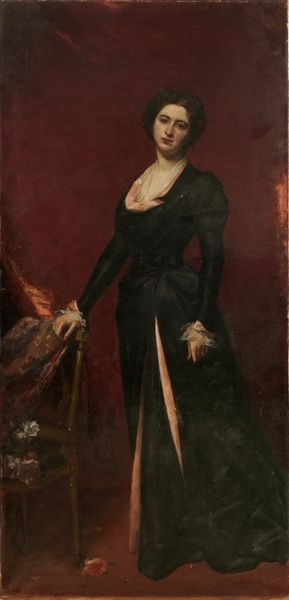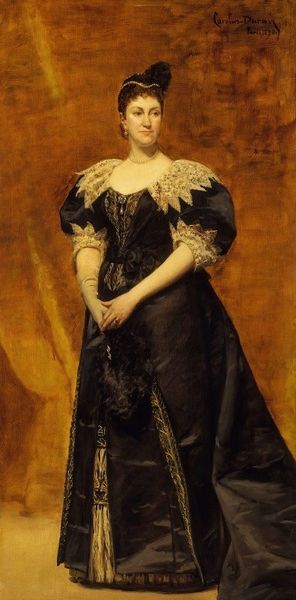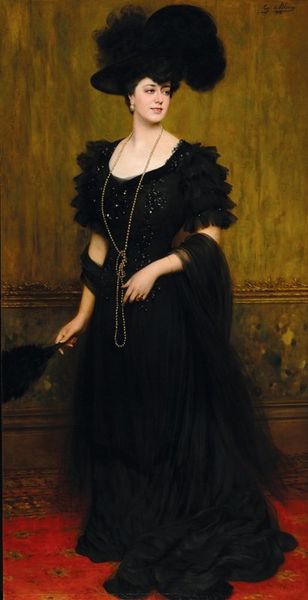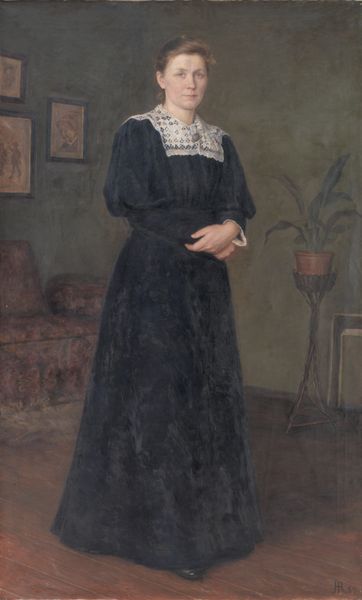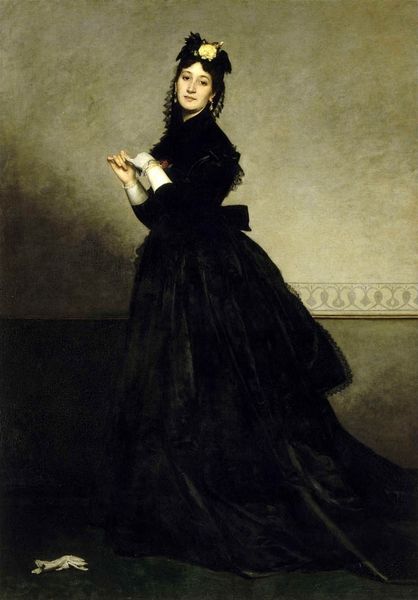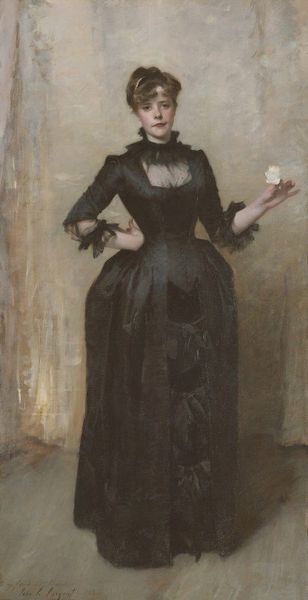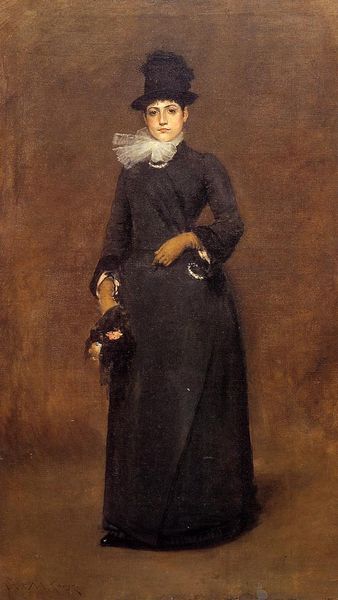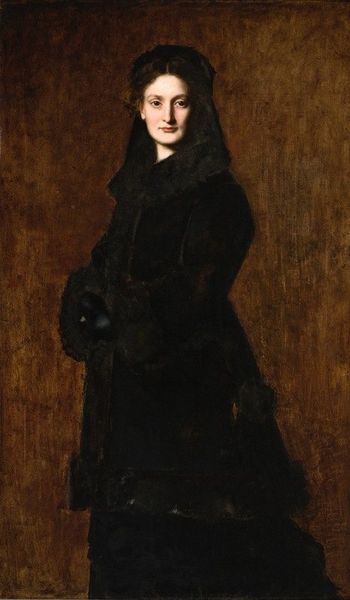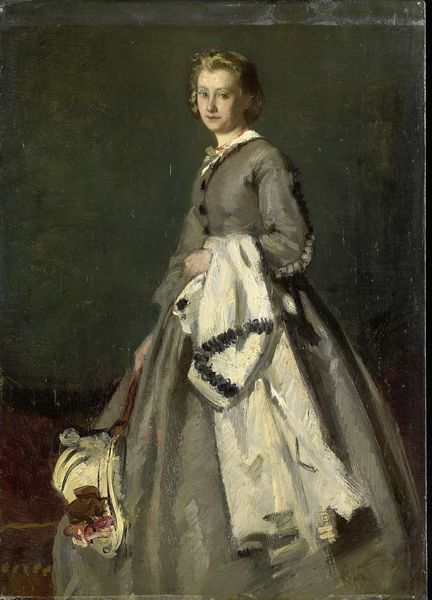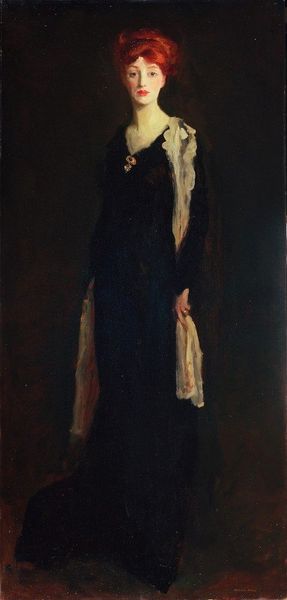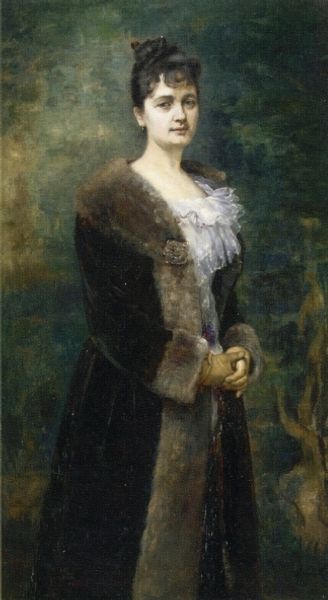
Copyright: Public Domain: Artvee
Curator: Look at this compelling portrait of Countess Rattazzi, née Maria-Laetitia Bonaparte-Wyse, crafted in 1872 by Carolus-Duran using oil paints. Editor: It’s rather… operatic, isn't it? That blazing red background—it just grabs you, doesn't it? And the darkness of her dress seems almost defiant against it. Curator: Red backdrops often symbolize power, vitality, even revolution. The color was frequently chosen for portraits of important figures, reinforcing their status. What do you make of her gaze? Editor: It’s interesting…distant. It’s as though she is aware of being watched, aware of her place in society, yet completely disengaged at the same time. I get a strange feeling from it—a kind of regal melancholy, maybe? Curator: Notice how the details, the lace on her dress, the feathered fan, they all seem to act as markers of identity. These elements reinforce societal expectations tied to wealth and status in 19th century France. Editor: Those little accessories tell their own story, don’t they? But I’m struck by the odd contrast – the cool formality versus the intensely emotional red that's impossible to ignore. And yet she has the faintest trace of a smile. It makes you wonder what she truly feels! Curator: Indeed. And the slightly softened brushstrokes lend an almost dreamlike quality, softening any potential severity of the pose. These artistic choices further heighten that feeling of subtle inner-conflict you picked up on earlier. Editor: It is a painting full of nuance! Perhaps her somber gaze speaks of the burdens accompanying her place in the world. I suppose, art offers endless interpretations of an era, emotions and… identities. Curator: Very well observed. This painting resonates because of the skillful weaving together of symbolic language, technique and of course the elusive emotionality radiating from the sitter herself. Editor: I agree. It reminds us that portraits are more than just appearances; they are a dialogue across time, inviting us to understand the intricate inner world of its subject.
Comments
No comments
Be the first to comment and join the conversation on the ultimate creative platform.
